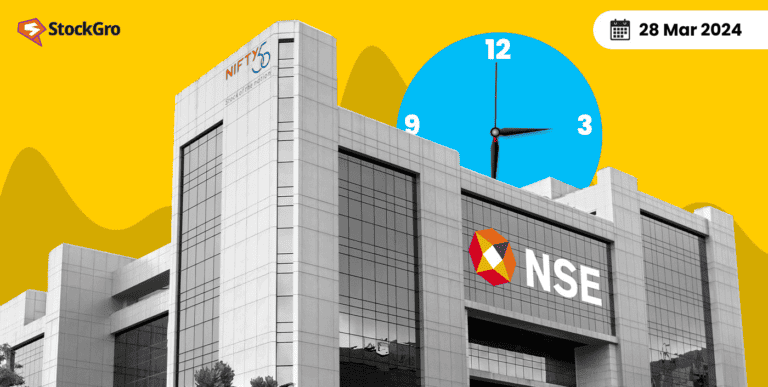Table of contents
The financial industry has a term for a curve of a smile that falls and rises: the “volatility smile.”
Intending to make more informed choices and gain control of risk while trading options and derivatives, traders often use the volatility smile and its associated volatility surface.
Two major ideas in investing and finance are the volatility smile and the volatility surface. This article will focus on the volatility smile strategy, how to use it, its importance, and its limitations.
What is an option volatility smile?
Volatility smiles are visual representations deriving from plotting the implied volatility and strike prices of a collection of options with the identical underlying asset and expiry date. One reason it’s termed a smile is due to the concave form that comes from the implied volatility of options with lower strike prices being higher than that of options with greater strike prices.
The volatility smile might reflect the market’s prediction of potential volatility. The market anticipates increased volatility in the future since options with lower strike prices are more likely to be exercised in the case of a dramatic price change.
In general, implied volatility rises when the underlying asset of an option moves from being at the money (ATM) to being heavily OTM or ITM.
The fact that the market views the underlying asset as risky is another probable reason why a smile appears. Keep in mind, too, that not all options display volatility smiles.
How to use a volatility smile?
The U-shape of the volatility smile occurs when options with various strike prices but the same expiration date are considered.
The strike price and the present trading price of the asset are identical in an at-the money option. The implied volatility of an ATM option is indicative of the market’s overall expectations regarding the stock price’s fluctuations.
You may get a good idea of whether there’s a volatility smile by looking at the implied volatility of the different strike prices in an options chain. Options that are out-of-the-money and in-the-money by the same amount should have around the same implied volatility if the option has a U-shape curve.
The implied volatility increases as one moves more ITM or OTM, with the lowest implied volatility close to the ATM options.
A smile-shaped curve, with a dip at the ATM option and a rise at the ITM and OTM options, is seen when we plot these implied volatilities with the strike prices. The Volatility Smile looks like this.
What is the volatility surface?
Although the volatility smile provides a momentary view of the market mood, it is not without limits. Only options with the same expiration date are considered. In this case, the volatility surface is beneficial. Consider it a three-dimensional representation of the smile that provides an up-close picture of the market’s mood.
The implied volatility surface plots implied volatility against the strike price and time to expiry in three dimensions. Because it considers that implied volatility might change with strike price and expiry time, it is a more intricate alternative to the volatility smile.
Options traders and risk managers rely on the volatility surface, a tool that shows how the market anticipates volatility in the future for various strike prices and maturities. It is possible to find trade opportunities and build pricing models for financial derivatives using the volatility surface.
Importance of volatility smile strategy
- An indication of market sentiment:
The volatility smile may give information on how the market feels about a specific asset. A pronounced smile might indicate that the market anticipates a higher rise in prices, either up or down.
- Controlling risks:
Traders and risk managers may better grasp the associated risk with varying strike prices using the volatility smile. Depending on the perceived volatility of specific options, it may help fine-tune risk management strategies.
- The cost of options:
When it comes to option pricing, the volatility smile is vital. A volatility smile considers that volatility varies with varied strike prices, which leads to accurate pricing.
- Anomalies in the market:
A volatility smile is an unusual event in the market because it goes against the idea that volatility should always be present in standard financial models. Researchers and practitioners may understand these anomalies and enhance financial models by examining the volatility smile.
Conclusion
It is crucial to comprehend these concepts since the financial markets are dynamic and ever-evolving.
Regarding the unpredictable nature of financial markets, traders and investors who can read the signs of volatility grins and surfaces have an advantage ahead of the competition.
FAQs
The volatility surface is a three-dimensional plot that shows implied volatility for options with different strike prices and expiration dates, providing a comprehensive view of how implied volatility changes over time and for various strike prices. It’s like a landscape of volatility across time and price. In contrast, the volatility smile is a two-dimensional plot for a fixed expiration date, showing the implied volatility across different strike prices.
The three types of volatility are:
Historical Volatility (HV): Also known as realised volatility, it measures past market movements.
Implied Volatility (IV): This reflects the market’s forecast of a likely movement in a security’s price and is derived from the market price of an option.
Relative Volatility (RV): Often represented by Beta, it indicates how much a stock moves in relation to the market.
A volatility smile is a pattern where implied volatility is symmetrically higher for ITM and OTM options compared to ATM options. It suggests that the market expects significant movements in either direction. A volatility smirk, on the other hand, is a variation of the smile where implied volatility is asymmetrically skewed, typically showing higher volatility for OTM put options. This indicates a market expectation of a downward move or a greater perceived risk of a significant drop in prices.
The terms smile and skew refer to the shape of the implied volatility curve. A volatility smile shows a symmetric increase in implied volatility for options that are ITM and OTM. In contrast, a volatility skew is an asymmetric curve where implied volatility is higher for either ITM or OTM options, usually indicating a market bias or expectation of directional movement.
The market’s predictions of future volatility may be inferred from volatility smiles, which can help traders make better trading choices. Let’s say that the market anticipates more volatility in the future since the implied volatility of OTM options is greater than the expected volatility of ATM options. Making decisions on buying or selling of options as well as determining the option’s strike price might be done using the information given.

